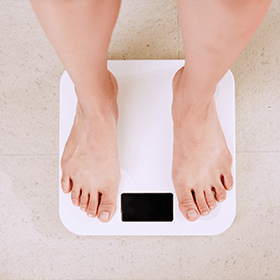By Ben Fletcher
The Health Benefits of Physical Activity
Physical activity is any bodily movement produced by the skeletal muscles that requires energy expenditure. This could include activity while at work, travelling, playing with your children, performing household chores and various recreational pursuits.
Some key facts about physical activity, courtesy of the World Health Organization (WHO):
One of the leading risk factors for death worldwide is through individuals not performing enough physical activity.
- Not performing enough physical activity is shown to be a key risk factor for noncommunicable diseases (NCDs) including cardiovascular diseases, cancer and diabetes.
- Being physical active has significant health benefits and helps to prevent NCDs.
- Worldwide, 1 in 4 adults are not physically active enough.
- Over 80% of the world's adolescent population is not active enough for good health.
- Policies to address insufficient physical activity are active in 56% of WHO Member States, who have agreed to reduce insufficient physical activity by 10% in 2025.
How much physical activity should we be performing?
For children and adolescents aged 5-17 years
- At least 60 minutes of moderate to vigorous-intensity physical activity daily.
- Activities that strengthen the muscles and bones should be performed at least 3 times per week
For adults aged 18 years and older
- At least 150 minutes of moderate-intensity physical activity every week, or at least 75 minutes of vigorous-intensity activity every week, or a comparable combination of moderate- and vigorous-intensity activity
- Activities that strengthen the muscles should be performed twice per week and include the major muscle groups
- Individuals with poor mobility should include physical activity to improve balance and prevent falls on at least 3 days per week.
The benefits of physical activity
Performing moderate-intensity physical activity regularly, for example walking, cycling or playing sports has been repeatedly shown to benefit health. Whatever your age, some physical activity is better than none, and the positives of being active far outweigh the potential negatives, for example injury. Becoming more active and working towards the recommended activity levels, you can start to reap the many health benefits of exercise:
- Improved cardiorespiratory fitness
- Improved strength of muscles and connective tissues
- Improved bone function and health
- Reduced risk of hypertension, coronary heart disease, stroke, diabetes, multiple types of cancer e.g. breast cancer and colon cancer, and mental health issues such as depression and anxiety
- Reduced risk of falls, hip and spinal fractures
- Supporting energy balance and weight control
In a recent study performed at Push Doctor, we found that in just 9-weeks of aerobic and strength training, huge improvements were made:
- Resting heart rate was reduced on average by 16%
- The average improvement in the five-minute aerobic test was 5%, while average power and power per kilo improved by 8% and 9% respectively on the 30-second test.
- Peak power increased by 12%.
- On average, fat mass was reduced by 1.8kg, while muscle mass increased by 1.5kg.
- Although no formal strength testing was performed and included in the remit of this study, a continuous improvement in the resistance lifted was observed. Case in point, if we consider the trap-bar deadlift, the average starting weight was 0.57 x the participant's bodyweight, with an average finishing weight of 1.16 x their bodyweight after nine weeks.
- The pre and post movement screen showed further positive improvements in movement patterns.
What counts as moderate-intensity activity?
Moderate activity will raise your heart rate making you breathe faster and feel warmer. The NHS say that a great way to tell if you are working at a moderate level is if you can still talk but are unable to sing the words to a song.
Most people will class the following activities as moderate-intensity:
- Brisk walking
- Water aerobics
- Riding a bike on level ground or with a few hills
- Pushing a lawn mower
- Hiking
- Skateboarding
- Rollerblading
- Volleyball
- Golf
- Yoga
What counts towards your vigorous-intensity activity?
Vigorous activity makes you breathe hard and fast and while you are working at this level you will find it hard to hold a conversation without pausing for a breath. The NHS say that in general, 75-minutes of vigorous-intensity activity is equal to 150-minutes of moderate-intensity activity in terms of health benefits.
Most people will class the following activities as vigorous-intensity:
- Jogging or running
- Fast swimming
- Riding a bike quickly or on more hilly routes
- Tennis
- Football
- Rugby
- Martial arts
What activities will strengthen your muscles?
Strength can be defined as the muscles ability to exert force against load. There are multiple ways in which we can train strength, and some of you will be glad to know that you don't have to step in a gym if you don't want to as you can perform a lot of exercises at home. For example:
- Resistance training using additional equipment such as barbells, dumbbells, kettlebells, resistance bands and medicine balls.
- Resistance training using your own bodyweight with exercises such as pull-ups, press-ups, lunges and planks
- Yoga
- Pilates
Strength training can be performed on the same, or different day to your aerobic training. It is not, however, aerobic exercise so does not count towards your recommended minutes of weekly aerobic activity.
When performing muscle strengthening activity, you should look to incorporate all the major muscles and joints of the body. See the programme from our case study for an example of how this could look.

